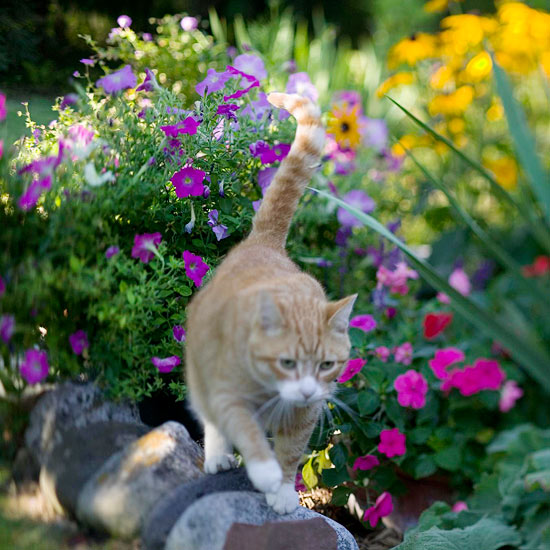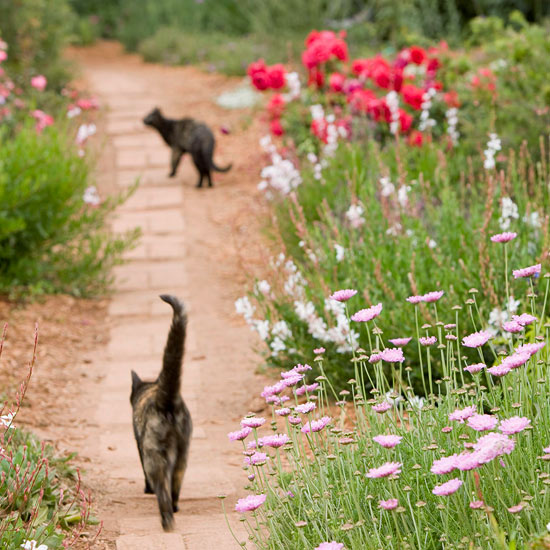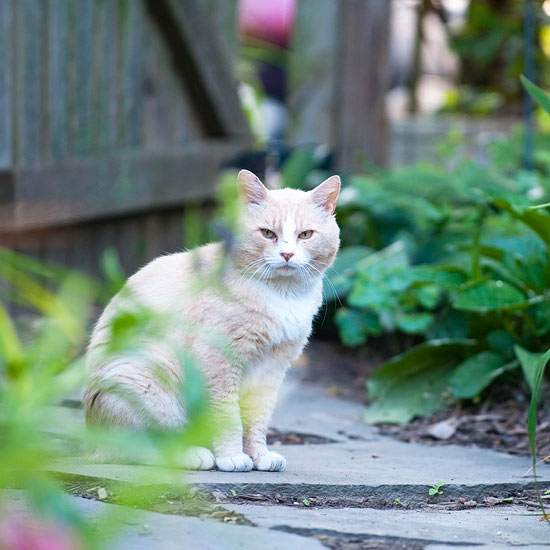






For gardeners who are cat lovers, the topic of cats in the garden is a delicate one. But when feral cats (or your neighbors' pets) use your garden as a litter box, you have a problem. The most serious aspect of the problem is a health risk: Cats can be a host for Toxoplasma gondii, a parasite that can be transmitted to humans from cat feces. This parasite is particularly dangerous to pregnant women and immune-suppressed individuals. Make it a practice to wear gloves while gardening -- and keep your child's sandbox covered.
continue reading below
Another concern about cats that roam outdoors is the damage they can do to the songbird population. There are an estimated 80 million house cats and 120 million feral cats in the United States today. Cats are predators, and even well-fed, seemingly lazy house pets are instinctual hunters. While the exact number is not known, hundreds of thousands of songbirds are likely killed by cats annually in the United States. The U.S. Fish and Wildlife Service estimates the number is even higher, and that is sad news for the bird lovers among us.

So what can be done to keep peace with our neighbors and unwanted cats out of our yards? There is hope. Let's take a look at some products on the market today and some low-tech repellents we can mix up at home. You can buy motion-activated sprinklers such as ScareCrow brand. When a cat enters the sprinkler's infrared field, the sprinkler shoots out a stream of water in the cat's direction to frighten it away. Everyone knows that cats don't like water, and this method can quickly teach cats to stay away. (Or if you're in the garden a lot, you can do it the old-fashioned way by spraying cats with your garden hose when you see them trespassing in your yard.)
Another type of deterrent, such as CatStop, uses ultrasonic sound. This device also employs a motion sensor to detect cats' presence; it then emits a high-frequency sound alarm. The sound is startling to cats but virtually inaudible to humans.

Scent repellents, well known to gardeners for detracting deer, can also be helpful in deterring cats. Reviews on scent repellents' success are mixed. Many store-bought repellents rely on capsaicin, the chemical that makes chile peppers hot. Some repellents, such as Shake-Away, use the scent of predators' urine to scare away cats. With any scent repellent, you will need to reapply it every seven to 10 days or after a heavy rain. After a few applications, the odor may send your feline visitors looking elsewhere.
There are also a number of DIY home remedies worth trying. They might take a little time, but they cost next to nothing. One recipe calls for 2 parts cayenne pepper, 3 parts dry mustard, and 5 parts flour. Simply mix the ingredients together and sprinkle over your flowerbeds. Cats don't like the smell of citrus, so putting down peels or citrus oils may make cats think twice about digging in your garden. Coleus canina, otherwise known as scaredy cat plant, is reported to deter cats, as do rue and lavender. Placing mothballs around plants, an old method of keeping cats and rabbits at bay, might be effective, but they are toxic to humans and animals and should never be used in the garden.
Copyright © www.100flowers.win Botanic Garden All Rights Reserved